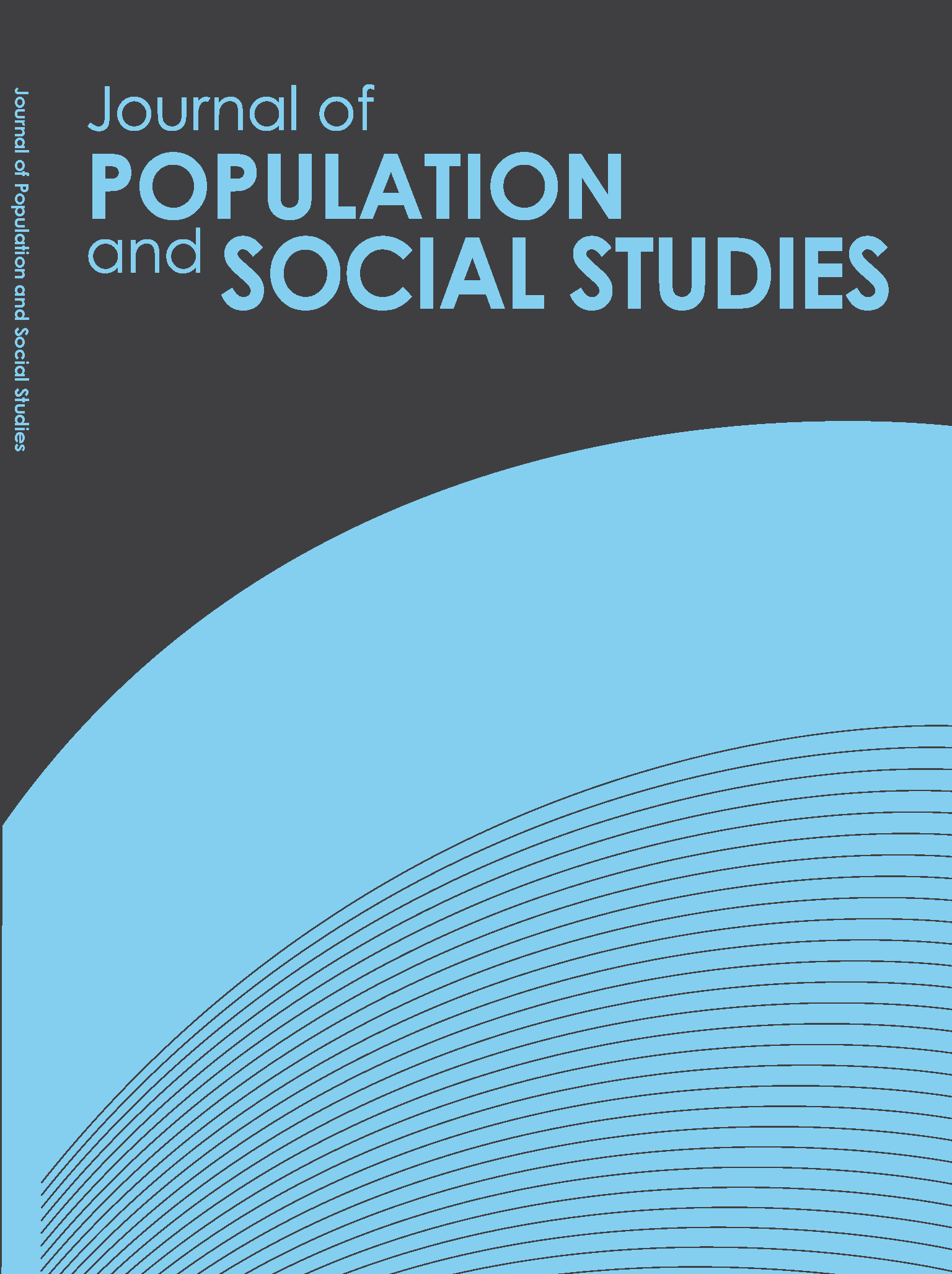The Impact of Educational Assortative Mating on Income Inequality: Evidence from Argentina
Main Article Content
Abstract
This paper seeks to quantify the impact of educational assortative mating on income inequality among households in Argentina. We use microdata from two household surveys conducted by the National Institute of Statistics and Census: The Permanent Household Survey and the National Survey of Risk Factors. We construct contingency tables and perform a regression analysis to study the existence of educational assortative mating. We also present counterfactual simulations of random re-matching of observations. The results show that a sizeable proportion of couples are educationally homogamous (45%). Comparing the Gini coefficients calculated in the real matching and the simulated scenarios, we observe a reduction of up to 4 points. Thus, the educational assortative mating represents a relevant dimension to explain income inequality. Our results recommend considering this matching pattern when defining optimal income taxes; this is, if there is a high positive covariance between the income of both members of the couple, it seems appropriate, from a redistributive point of view, to define income taxes at the household level and not at the individual level (as is currently the case in most countries, including Argentina).
Article Details
References
• Boertien, D., & Permanyer, I. (2019). Educational assortative mating as a determinant of changing household income inequality: A 21-country study. European Sociological Review, 35(4), 522-537. https://doi.org/10.1093/esr/jcz013
• Bratsberg, B., Markussen, S., Raaum, O., Røed, K., & Røgeberg, O. (2018). Trends in assortative mating and offspring outcomes. IZA Working Paper No. 11753. https://ftp.iza.org/dp11753.pdf
• Breen, R., & Salazar, L. (2011). Educational assortative mating and earnings inequality in the United States. American Journal of Sociology, 117(3), 808-843. https://doi.org/10.1086/661778
• Cherchye, L., De Rock, B., Surana, K., & Vermeulen, F. (2020). Marital matching, economies of scale and intrahousehold allocations. The Review of Economics and Statistics, 102(4), 823-837. https://doi.org/10.1162/rest_a_00829
• Ciscato, E., & Weber, S. (2020). The role of evolving marital preferences in growing income inequality. Journal of Population Economics, 33, 307-347. https://doi.org/10.1007/s00148-019-00739-4
• Eika, L., Mogstad, M., & Zafar, B. (2019). Educational assortative mating and household income inequality. Journal of Political Economy, 127(6), 2795-2835. https://doi.org/10.1086/702018
• Frémeaux, N., & Lefranc, A. (2020). Assortative mating and earnings inequality in France. Review of Income and Wealth, 66(4), 757-783. https://doi.org/10.1111/roiw.12450
• Gabrielli, M., & Serio, M. (2017). Testing assortative mating: Evidence from Argentina. Revista de Análisis Económico, 32(2), 109-129. http://dx.doi.org/10.4067/S0718-88702017000200109
• Gihleb, R., & Lang, K. (2016). Educational homogamy and assortative mating have not increased. NBER Working Paper No. 22927. https://www.nber.org/system/files/working_papers/w22927/w22927.pdf
• González, F. A. I. (2020). Regional price dynamics in Argentina (2016–2019). Regional Statistics, 10(2), 83-94. http://dx.doi.org/10.15196/RS100205
• González, F. A. I., & Santos, M. E. (2020). Pobreza multidimensional urbana en Argentina. Reducción de las disparidades entre el Norte Grande Argentino y Centro-Cuyo-Sur? (2003-2016) [Urban multidimensional poverty in Argentina. Reduction of the disparities between the Norte Grande Argentino of Argentina and the Centro-Cuyo-Sur? (2003-2016)]. Cuadernos de Economía, 39(81), 795-822. https://doi.org/10.15446/cuad.econ.v39n81.76486
• González, F. A. I., Dip, J. A., & London, S. (2021). Long-lasting effects of pandemics: The case of the 1918 influenza pandemic in Argentina. Spatial and Spatio-temporal Epidemiology, 37, 100409. https://doi.org/10.1016/j.sste.2021.100409
• Greenwood, J., Guner, N., Kocharkov, G., & Santos, C. (2014). Marry your like: Assortative mating and income inequality. American Economic Review, 104(5), 348-353. http://dx.doi.org/10.1257/aer.104.5.348
• Greenwood, J., Guner, N., Kocharkov, G., & Santos, C. (2015). Corrigendum to marry your like: assortative mating and income inequality. http://www.jeremygreenwood.net/papers/ggksPandPcorrigendum.pdf
• Harmenberg, K. (2017). A note: The effect of assortative mating on income inequality. https://www.karlharmenberg.com/papers/assortative_harmenberg.pdf
• Hryshko, D., Juhn, C., & McCue, K. (2017). Trends in earnings inequality and earnings instability among U.S. couples: How important is assortative matching? Labour Economics, 48, 168-182. https://doi.org/10.1016/j.labeco.2017.08.006
• Hugh-Jones, D., Verweij, K. J. H., St. Pourcain, B., & Abdelllaoui, A. (2016). Assortative mating on educational attainment leads to genetic spousal resemblance for polygenic scores. Intelligence, 59, 103-108. https://doi.org/10.1016/j.intell.2016.08.005
• Instituto Nacional de Estadística y Censos (INDEC). (2003). La nueva Encuesta Permanente de Hogares de Argentina. 2003 [The new Permanent Household Survey of Argentina. 2003]. https://www.indec.gob.ar/ftp/cuadros/sociedad/Metodologia_EPHContinua.pdf
• Kuhn, U., & Ravazzini, L. (2017). The impact of assortative mating on income inequality in Switzerland. FORS Working Paper No. 2017-1. http://doi.org/10.24440/FWP-2017-00001
• Leal, V. F. (2015). Emparejamiento selectivo y desigualdad en Argentina [Selective mating and inequality in Argentina]. [Master Thesis]. Universidad Nacional de La Plata. http://sedici.unlp.edu.ar/handle/10915/51560
• Medina, F. (2001). Consideraciones sobre el Índice de Gini para medir la concentración del ingreso [Considerations on the Gini Index to measure the concentration of income]. Serie Estudios Estadísticos y Prospectivos. CEPAL, 9, 1-43. https://repositorio.cepal.org/bitstream/handle/11362/4788/S01020119_es.pdf?...1
• National Survey of Risk Factors (2018). Microdata database. https://www.indec.gob.ar/indec/web/Institucional-Indec-BasesDeDatos-2
• Paz, J. (2019). La brecha salarial por género en Argentina: análisis acerca de la segmentación laboral [The gender pay gap in Argentina: analysis of labor segmentation]. Sociedade e Cultura, 22(1), 157-178. https://doi.org/10.5216/sec.v22i1.57894
• Pereira, L., & Santos, C. (2017). Casamentos seletivos e desigualdade de renda no Brasil [Selective marriages and income inequality in Brazil]. Revista Brasileira de Economia, 71(3), 361-377. https://doi.org/10.5935/0034-7140.20170017
• Permanent Household Survey (2021). Quarter Microdata Database. https://www.indec.gob.ar/indec/web/Institucional-Indec-BasesDeDatos
• Schwartz, C. R., & Graf, N. L. (2009). Assortative matching among same-sex and different-sex couples in the United States, 1990-2000. Demography Research, 21, 843-878. https://doi.org/10.4054/DemRes.2009.21.28
• Schwartz, C. R., & Mare, R. D. (2005). Trends in educational assortative marriage from 1940 to 2003. Demography, 42(4), 621-646. https://doi.org/10.1353/dem.2005.0036
• Smits, J., & Park, H (2009). Five decades of educational assortative mating in 10 East Asian societies. Social Forces, 88(1), 227-255. https://doi.org/10.1353/sof.0.0241
• Torche, F. (2010). Educational assortative mating and economic inequality: A comparative analysis of three Latin American countries. Demography, 47(2), 481-502. https://doi.org/10.1353/dem.0.0109
• Tornarolli, L. (2018). Series comparables de indigencia y pobreza: Una propuesta metodológica [Comparable series of indigence and poverty: A methodological proposal]. CEDLAS Working Paper No. 226. https://www.cedlas.econo.unlp.edu.ar/wp/wp-content/uploads/doc_cedlas226.pdf


